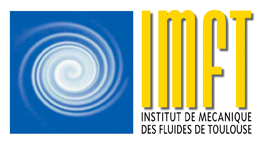Liquid jets formation from an oscillating bubble near a free surface in the context of Laser-Induced Forward Transfer (LIFT)
Soutenance de thèse Gauthier Dussuyer
Mercredi 13 novembre à 10h00 – Amphithéâtre Nougaro
Abstract
Printing techniques have undergone several major advances since the discovery of printing in the 15th century. In the end of the 20th century (1980’s), a major breakthrough has been made with the birth of 3D printing, allowing the printing of rather complex shape in three dimensions. Few years later, another major notable discovery has been made with the Laser-Induced Forward Transfer (LIFT) process. This printing technique differs from its predecessors in that it is nozzle-free and thus broaden the range of printable inks. The application of this technique for the print of liquids is much more recent (pioneer works date from the mid 2010’s). To date, the complete understanding of the Laser Induced Forward Transfer, especially for the print of liquids, is still a challenge.
The use of the LIFT technology, in a bio printing context, involves small scales both in space (few micrometers) and in time (few microseconds). For this reason, access quantitative data of the process is experimentally complex. Computational Fluid Dynamics can help providing a complementary understanding of the process.
This thesis is the result of the collaboration between IMFT and Poietis and aims at unveiling the fluid dynamics underlying the LIFT of liquids, mainly by the prism of the Computation Fluid Dynamics (CFD).
LIFT of liquids can either be done in a semi-infinite configuration, where the liquid is contained in a bulk (Film-Free LIFT configuration), or in a confined configuration, where the liquid is deposited as a thin liquid film over a substrate (Dynamic-Released Layer LIFT). In this thesis, we study both configurations. Prior to these investigations, the confidence into the numerical tools has to be established. For this work, we have selected the CFD software OpenFOAM and have proposed a set-up of the code for the
problem of interest.
We discuss the relevance of the Stand-Off parameter, an adimensionnal number widely employed for the characterization of the interaction between an expanding bubble and a free interface. The influence of the problem parameters on the first jet as well as on the counter-jet and a scaling of their velocities is proposed. We study the secondary jet, the various shapes it can take and explain its origin. We distinguish several types of secondary jets and discuss the impact of surface tension and of viscosity on the latter. It allows us to establish a complete mapping of the different possible regimes. The transferred volume is analyzed and we show the influence of each parameter and the contribution of each jet. The use of contour maps, generated thanks to a large panel of simulations makes possible to establish parameter range for which liquid transfer is optimal.
We then study the interaction of an expanding bubble with a free surface, in a confined configuration. We explain how to calibrate initial conditions in order to simulate the DRL-LIFT process, starting from a bubble radius of O(10µm) and compare experimental and numerical results. We show difference with the un-confined configuration. The bubble piercing and the counter-jet redirection, induced by the wall, are analyzed for several viscosities and surface tension. We establish the origin of the secondary jet, in a confined configuration. We study the shape of the secondary jet and show to what extend the confinement affects it.
Finally, we place a substrate few millimeters above the considered liquid film and discuss the liquid deposition for some cases.
Alltogether, this work helps providing a better understanding of the liquid motion occurring in both the Film-Free LIFT and DRL-LIFT configurations.
- Jose Manuel GORDILLO Professeur d’Université Rapporteur
- Christophe JOSSERAND Professeur d’Université Rapporteur
- Joelle AUBIN Directrice de recherche CNRS Membre du jury
- François-Xavier DEMOULIN Professeur d’Université Membre du jury
- Daniel FUSTER Directeur de recherche CNRS Membre du jury
- Antonio IAZZOLINO Docteur Co-Directeur de thèse
- Dominique LEGENDRE Professeur d’Université Directeur de thèse
